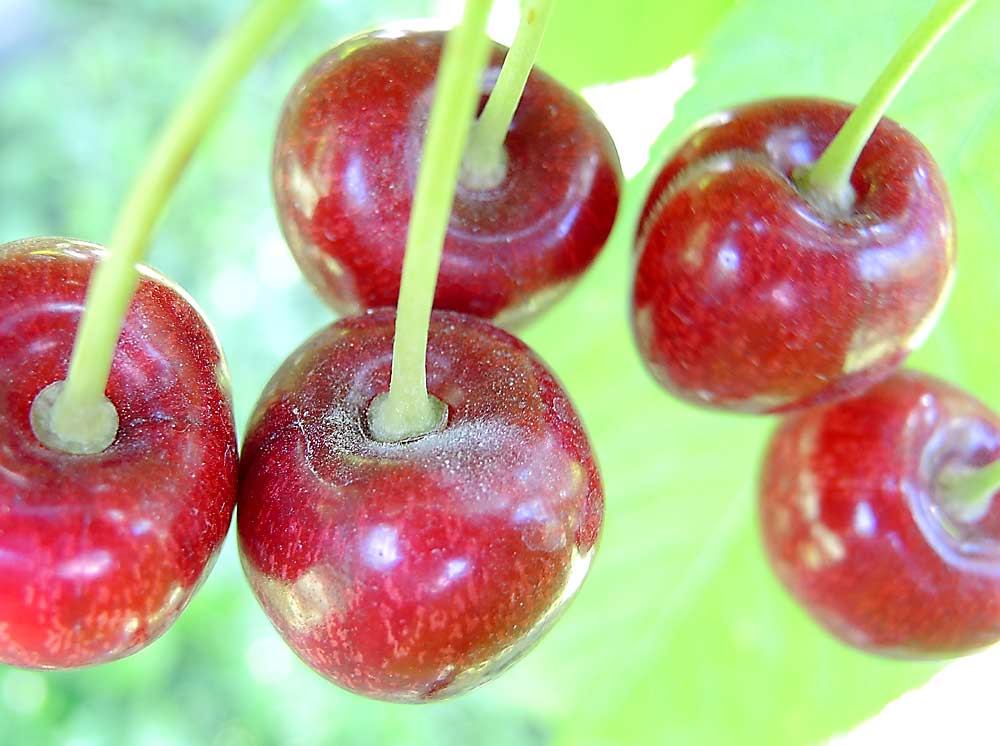
Investing in powdery mildew control pays off. But the equation looks like financial investing in reverse.
“It’s like compound interest. The disease is a function of how much inoculum overwintered, the rate of spread, and time,” said Gary Grove, a Washington State University plant pathologist. “If you start with zero, you’ll have zero.”
That’s the ideal scenario, of course.
And that’s what many Northwest growers enjoyed for a few years when powdery mildew “virtually disappeared,” Grove said, as the dry spring and hot summer in 2021 was inhospitable to powdery mildew. The overwintering form of the fungus, called chasmothecia, needs soaking from rain or irrigation to release the ascospores that kick-start a new season of powdery mildew. The Northwest didn’t get that in 2021, which set the stage for low pressure in 2022 as well.
Of course, all good things come to an end.
“The important thing is that we are starting to see more mildew again,” Grove said during a talk at North Central Washington Stone Fruit Day in Wenatchee in January. “After several years, you can see that it starts to build up in the orchard again.”
Powdery mildew pressure builds up quickly because, after the initial infection period, the fungal pathogen continues to reproduce throughout the season. The ascospores infect leaves in the spring, and then the fungus will produce conidia, the asexual reproductive form, again and again.
“This is called a polycyclic disease. It keeps repeating as long as there is green cherry tissue to attack,” Grove said.
That can create an exponential growth curve, unless growers intervene. Slowing that rate of growth, like a lower interest rate, adds up to less pressure when the cherries themselves become vulnerable to infection.
“Fruit are only susceptible for the last two weeks before harvest, but you need to keep the inoculum low to protect the fruit,” he said.
Cultural practices that encourage airflow and light penetration make the orchard less conducive and reduce the reproductive rate.
“Sucker removal is vitally important,” Grove said. “This is a great place to produce conidia for further disease increase.”
He also cautioned growers to be careful with FRAC Group 11 and Group 3 products, which both have widespread resistance in Washington cherry blocks.
“We haven’t totally lost 11, but that puts more (resistance) pressure on the groups that remain,” he said.
He recommends product rotations, tank-mixing fungicides and using premixed, multisite products, as long as growers carefully track the active ingredients in them. “Don’t be stingy with rates and timings,” he added.
As for organic options such as sulfur or oil, Grove cautioned against relying on them when pressure is already high. Most fungicides function best when applied in a protective, rather than reactive, manner.
Returning to his compound interest analogy, Grove pointed out that, if possible, delaying the start of the cycle — by holding off heavy irrigation during dry spring weather — can also delay disease onset.
There are no consistent tools to manage cherry powdery mildew in the dormant season. Trying to reduce the inoculum buildup in the fall, postharvest, to reduce the impact on the next season makes sense, conceptually, Grove said, but with a limited number of active ingredients and the need to both protect fruit and avoid resistance, it’s a complicated proposition. Group 7 fungicides, for example, reduce the production of chasmothecia, but growers need it in their preharvest rotation.
How to know if you should be ready for powdery mildew management this year?
“If you had mildew last season, the best thing you can do this season is start spraying earlier,” Grove said.
—by Kate Prengaman






Leave A Comment